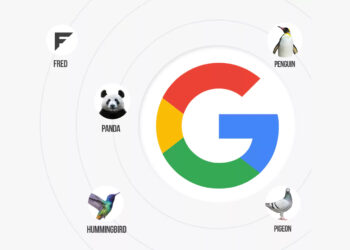Building a sustainable advertising-based business requires understanding two fundamental questions: how advertising inventory gets priced and how the sales ecosystem actually works.
For publishers and app developers in Egypt and the broader MENA region, these decisions can make the difference between a profitable venture and an expensive learning experience.
How Digital Advertising Gets Priced
Digital advertising operates on a simple principle: brands pay based on specific campaign objectives, whether that’s awareness, engagement, or direct sales.
The more developed the market, the more publishers rely on precise data rather than broad estimates. In MENA’s growing digital economy, this means understanding five core pricing models.
Cost Per Mille (CPM): Selling Impressions
Publishers sell advertising space in blocks of 1,000 impressions using the CPM model. This remains the dominant approach across Egyptian publishers, from news sites to entertainment platforms.
Current CPM rates in Egypt vary dramatically based on audience quality:
- Mass Arabic content: 5-10 EGP per 1,000 impressions
- News and sports sites: 10-20 EGP (Youm7 ~10 EGP, Al-Masry Al-Youm ~15 EGP)
- Niche verticals: 20-35 EGP (automotive, health, women’s content)
- English content: 25-45 EGP
- Premium lifestyle: 45+ EGP (targeting affluent demographics)
The pricing spectrum reflects audience purchasing power and advertiser demand. Premium English-language sites command higher rates because they reach consumers with greater spending capacity.
Cost Per Click (CPC): Performance-Driven Revenue
Under the CPC advertising model, publishers earn money only when users click ads. Egyptian CPC rates typically range from 1-15 EGP per click, following similar audience segmentation as CPM.
Surprisingly, only about 5% of Egyptian ad campaigns use CPC pricing, despite its performance transparency. Most local advertisers still prefer CPM’s predictable reach metrics over click-based performance.
Cost Per Action (CPA): Conversion-Focused Partnerships
CPA represents the most mature advertising relationship, where publishers earn commissions for specific user actions like purchases or lead generation.
While underdeveloped in Egypt’s broader market, certain sectors show promise:
- Food delivery: 8-15% commission on orders generated
- Real estate: Fixed fees per qualified lead
- E-commerce: Emerging affiliate partnerships
Cost Per View (CPV): Video-Specific Monetization
Video content commands premium rates because engaged viewers represent higher-quality attention. A single video view can be worth 5-10 times more than static impressions.
However, competing directly with YouTube’s established ecosystem presents significant challenges for new publishers.
Native Advertising and Branded Content
Sponsored content integrates advertising into editorial material, from advertorials to sponsored social media posts. Pricing depends on production costs, audience size, and brand integration complexity.
This model works particularly well for publishers with strong editorial voices and engaged communities.
Traffic Thresholds for Advertiser Attention
Even premium audiences won’t generate advertising revenue without sufficient scale. Egyptian publishers typically need 1-5 million monthly impressions from 350,000-1,000,000 unique visitors before major advertisers take notice.
The threshold varies inversely with audience quality – niche, affluent audiences require lower traffic volumes than mass-market content.
Mobile App Considerations
Mobile applications face different metrics and thresholds:
- Active users matter more than total downloads
- Required audience thresholds drop 20-40% compared to websites
- User login data enables better targeting and higher rates
- In-app engagement typically shows stronger commitment than web browsing
Measuring Advertising Effectiveness
Click-through rates (CTR) measure how effectively ads convert impressions into engagement. This metric helps advertisers evaluate both creative performance and placement quality.
Publishers with consistently strong CTR can command premium pricing because they deliver better results for advertiser investments.
Regional Market Dynamics
Egyptian publishers compete against international platforms offering significantly lower costs. Facebook and Google advertising often provides better value than local websites, creating pricing pressure across the industry.
This competitive reality shapes everything from audience targeting to rate negotiations with local advertisers.
Seasonal Advertising Patterns
MENA advertising spending follows predictable seasonal cycles:
- Ramadan: Peak advertising activity, rates increase 30-50%
- Eid periods: Premium inventory, rates up 60-80%
- Summer months: Reduced activity, rates drop 10-20%
- Back-to-school: Education and retail surge, rates up 20-30%
Building a Sustainable Advertising Business
Essential Foundation Elements
Successful advertising-based publishers focus on six core areas:
Audience Definition: Understanding your readers goes beyond demographics. Use analytics to prove engagement quality, session duration, and return visitor patterns.
Traffic Development: Consistent growth toward advertiser-worthy thresholds requires content strategy, SEO optimization, and social media engagement.
Market Intelligence: Monitor industry pricing, competitor performance, and advertiser behavior. Digital advertising rates change frequently.
Competitive Positioning: Differentiate through unique audience segments, superior engagement metrics, or specialized content verticals.
Pricing Strategy: Research current market rates regularly. The figures in this guide change as the market evolves.
Niche Identification: Wealthy verticals with limited digital competition can offer outsized opportunities for focused publishers.
Common Pitfalls to Avoid
Many Egyptian publishers struggle with unrealistic expectations about advertising revenue timelines. Building substantial traffic takes months or years, not weeks.
Additionally, overestimating initial CPM rates leads to unsustainable business planning. Start with conservative revenue projections and scale gradually.
Platform Competition Reality
Local publishers compete directly with Facebook, Google, Instagram, and Twitter for marketing budgets. These platforms often offer better targeting, lower costs, and easier campaign management.
Successful publishers identify unique value propositions that complement rather than directly compete with social media advertising.
Future Market Trends
Several developments are reshaping Egypt’s digital advertising landscape:
- Increased mobile-first consumption patterns
- Growing demand for video content
- Rising importance of e-commerce integration
- Improved analytics and targeting capabilities
Publishers who adapt to these trends while maintaining strong audience relationships will capture disproportionate market growth.
Getting Started: Practical Next Steps
For entrepreneurs considering advertising-based business models, begin with audience development before monetization. Understanding reader behavior, content preferences, and engagement patterns provides the foundation for everything else.
Track competitor pricing, study successful publishers in your vertical, and maintain realistic growth timelines. The advertising business rewards consistency and audience quality over quick monetization attempts.
Most importantly, remember that advertising revenue represents just one monetization strategy. Diversifying income sources through subscriptions, e-commerce, or premium content reduces dependence on volatile advertising markets.
Related Topics:





